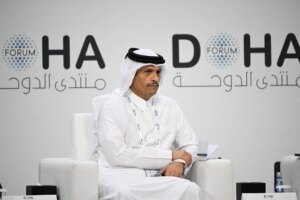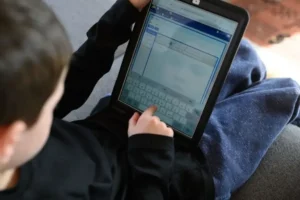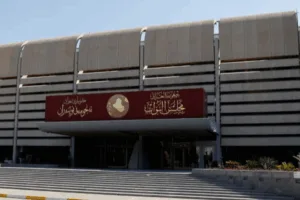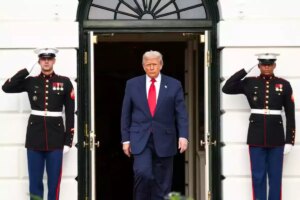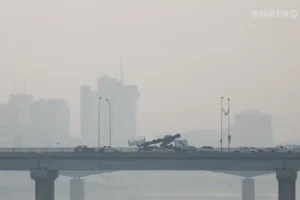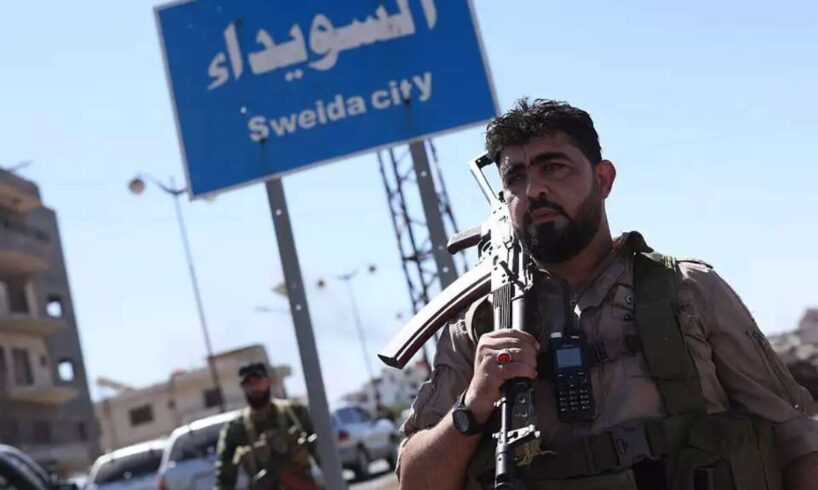
Southern Syria’s Sweida province – home to the country’s Druze minority – has become a flashpoint of unrest and confrontation. Local frustrations have simmered since August 2023, when residents launched peaceful protests over spiraling prices and government neglect, soon escalating into open calls for Bashar al-Assad’s oustertheguardian.com. The Druze-majority region remained a rare pocket of defiance for over a year, even as Assad’s rule collapsed amid a wider insurgency at the end of 2024theguardian.com. In recent weeks, however, the situation turned violent. What began as tit-for-tat kidnappings between local Druze factions and neighboring Sunni Bedouin tribes exploded into deadly clashesapnews.com. Syrian security forces moved in “to restore order,” only to end up exchanging fire with Druze militias as wellapnews.com. The escalation has been severe: initial sectarian fighting killed dozens, and independent monitors report the death toll has since climbed into the hundreds over several days of chaosapnews.comapnews.com. A ceasefire was hastily announced by Damascus after days of battles, but gunfire continued sporadically even afterward, underlining the fragility on the groundapnews.com.
Damascus’s Response and Motives
Facing this turbulence, the Syrian regime – now led by interim President Ahmed al-Sharaa – has struck a cautious, at times contradictory, posture. On one hand, Sharaa’s government has publicly hailed the Druze as “an integral part” of the nation and vowed to punish any abuses by its forcesapnews.com. Such rhetoric signals a desire to calm tensions and project inclusive authority. On the other hand, regime troops and allied fighters have been implicated in harsh reprisals during the Sweida operation, with reports of field executions, looting, and arson committed by security elementsapnews.com. This dual approach reflects Damascus’s strategic dilemma. It cannot afford an autonomous rebel enclave in Sweida – allowing one minority to peel away could embolden others – so it feels compelled to reassert control. Yet heavy-handed tactics carry their own risks. Even under Assad, the regime largely avoided an all-out assault on Sweida, opting instead for intimidation, targeted arrests and kidnappings to chip away at dissent, wary of turning the once-loyal Druze community irreversibly against Damascuswashingtoninstitute.org. Today’s rulers face the same constraint: a brutal crackdown would only deepen Druze alienation and could invite outside intervention. Indeed, despite Sharaa’s pledge of restraint, his forces’ behavior has so alarmed the community that local Druze leaders insist on maintaining their own armed factions for protection. While the interim government’s priority is to reunify Syria, its capacity is limited – evidenced by Sharaa’s difficulty controlling all fighters in his ranksfdd.org. Military pressure alone may backfire. Lasting stability will likely require a political accommodation with Sweida’s leaders, who, even after Assad’s fall, remain determined to be a “thorn in the side” of Damascus until their longstanding demands for representation and services are addressedtheguardian.com.
Turkey’s Posture and Priorities
The flare-up in southern Syria has drawn in regional powers – notably Turkey, which has its own complex stakes in Syria’s future. Turkish President Recep Tayyip Erdoğan has responded to the Sweida crisis with characteristic forcefulness. In remarks this week, he blasted Israel’s involvement across the border, accusing the “terror state” of cynically “using the Druze as an excuse” to expand its “banditry” into Syriatimesofisrael.com. Erdoğan vowed Ankara would not permit Syria’s division or the undermining of its territorial integritytimesofisrael.com. These statements, delivered after he consulted directly with Syria’s new president Sharaa on the situationtimesofisrael.com, highlight Ankara’s broader Syria policy at play. For years, Turkey backed Syrian rebel factions against Assad; now, with Assad gone, Turkey has recalibrated to assert influence over the post-war order. A cornerstone of Turkish policy is preventing any fragmentation of Syria that could embolden Kurdish separatism or reduce Ankara’s leverage. From Turkey’s perspective, Israeli airstrikes and talk of protecting a minority could set a precedent for foreign powers carving out spheres of influence in Syria – a precedent Turkey vehemently opposes. Moreover, Erdoğan’s sharp rhetoric serves domestic and regional aims: presenting Turkey as defender of Muslim communities and Syrian sovereignty, while pushing back against Israeli actions that he claims “sabotage” the fragile ceasefiretimesofisrael.com. Notably, Turkey’s interests do converge with others in desiring stability in Syria’s south – but on Ankara’s terms. It prefers the Syrian state (now dominated by factions Turkey can dialogue with) to reestablish control, rather than an autonomous Druze zone or international intervention. In short, Turkey is walking a fine line: supporting Syria’s unity and the new Damascus leadership, yet seeking to limit rival powers’ footprint in the unfolding Sweida drama.
Regional Implications and Israeli Interests
Though Syria’s Druze unrest is a local crisis, its ripple effects reach Israel’s doorstep and highlight wider strategic undercurrents. Jerusalem is watching intently. Throughout the civil war, Israel’s paramount concern has been to prevent Iran and its proxies from entrenching near the Golan Heights. The turmoil in Sweida has reactivated those concerns – and prompted unprecedented Israeli action. In the past week, the Israeli Air Force struck Syrian military convoys moving toward Sweida, with Israel’s government openly stating that the strikes were to “prevent the Syrian regime from harming” the Druze community and to “ensure disarmament in the area adjacent to our borders”apnews.com. This marked a rare direct intervention, justified in part by the deep bonds between Israel’s own Druze citizens and their co-religionists across the frontier. (Israeli Druze serve loyally in the IDF, and Israeli officials referred to a “covenant of blood” with the Druze as a driving force to shield their brethren in Syriafdd.org.) From Israel’s viewpoint, a bloodbath in Sweida or a hostile army deploying in force in the south could spell not only a humanitarian tragedy but a security nightmare. Jerusalem would quietly welcome a scenario where local communities like the Druze manage to keep extremist militants – especially any Iran-backed groups – out of the area. In effect, a self-reliant Druze zone could act as a buffer on Israel’s northeast border, complicating Tehran’s ambitions to use southern Syria as a staging ground against Israel. At the same time, Israel must calibrate its involvement. Too overt a role risks validating the very accusations Erdoğan levied about foreign meddling, and could hand Damascus or Tehran a pretext to rally Syrians against “Zionist aggression.” Israeli leaders appear aware of this balance. Analysts note that while Israel’s intervention to defend the Druze is morally and strategically understandable, it carries the danger of drawing Israel deeper into Syria’s quagmirefdd.org. Thus far, Israel has signaled it will enforce a red line against heavy weaponry or hostile militias operating near the Golan frontier – going so far as to warn it will uphold a “demilitarization” of Syria’s southwest if neededfdd.org. But beyond targeted strikes, Jerusalem has been cautious, avoiding any long-term military engagement.
Ultimately, the Sweida standoff is a microcosm of Syria’s broader puzzle after years of war. A marginalized minority is demanding dignity and security; a beleaguered central government is trying to reassert authority; regional powers like Turkey and Israel are maneuvering to protect their interests. The situation exposes the fault lines between external rhetoric and internal realities. A neutral observer might note that all players ostensibly share an interest in stopping the bloodshed and preventing Syria’s disintegration. Yet their clashing agendas – Damascus seeking control, Ankara guarding against Kurdish or Israeli encroachment, and Israel focusing on the Iranian threat – make forging a durable solution immensely challenging. For Israel, the best outcome would be a stable southern Syria where neither Iranian militias nor extremist forces can find a foothold – and where local communities like the Druze can live in peace, obviating the need for Israeli intervention. Achieving that outcome will require deft diplomacy as much as force. In the meantime, the world’s attention should stay on Sweida: both to support an oppressed community’s legitimate grievances and to ensure that this corner of Syria does not ignite a wider conflagration at the crossroads of the Middle East.
